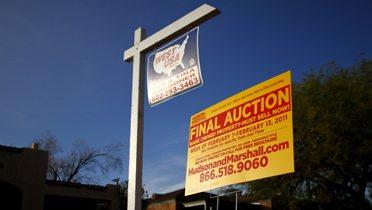EXECUTIVE SUMMARY
1. Home ownership has both positive and negative externalities, so we need to be careful in designing governmental subsidies for home ownership. Unfortunately, most of the current US subsidies for home ownership are not very effective, and some of these subsidies increase the default rate on home mortgages – a key negative externality.
2. The mortgage interest deduction (MID) is not well designed to promote home ownership and costs roughly $100 billion per year in lost tax revenues. To reduce the costs of the MID and strengthen its link to home ownership, Congress should:
- eliminate the MID for second homes and home equity loans; and
- provide a tax credit for mortgage interest on a primary residence, or reduce the ceiling on the MID from $1 million to $500,000 per couple.
3. Some states prohibit lenders from going after personal assets in collecting deficiencies after mortgage foreclosures. These states laws encourage home owners to make low down payments and walk away from “underwater” mortgages – when the mortgage amount exceeds the current value of the property. Therefore, Congress should:
- supersede state laws prohibiting personal recourse on mortgages, and
- allow individual hardship cases to be adjudicated by bankruptcy judges.
4. The FHA and VA programs for insuring home mortgage require minimal down payments, and set limits based on mortgage size rather than family income. Therefore, Congress should:
- gradually raise the down payment requirement for these programs to a reasonable percentage of the purchase price, and
- establish an income limit for these programs such as the median income level for the metropolitan area.
5. Ginnie Mae, a federal agency, that is part of HUD, already does a good job of securitizing mortgages insured by the federal government.
- If Congress decides to expand federal subsidies for home mortgages, it should do so through direct appropriations reflected in the federal budget.
- If Congress decides to provide government support for the securitization of these other mortgages, it should do so through Ginnie Mae.
6. Fannie Mae and Freddie Mac should be phased out gradually, by reducing the maximum size of conventional mortgages they may purchase. Most of their governmental subsidies have gone to shareholders and executives of these two corporations, and little has gone to homeowners.
- Government subsidized mortgages should be securitized through Ginnie Mae – priced accurately and included in the federal budget.
- Conventional mortgages should be securitized through the private sector, with appropriate reforms.
- The Federal Reserve should provide liquidity to the mortgage securities market, if and when necessary.
7. To revive the private market for mortgage-backed securities (MBS), federal regulators should adopt a combination of measures.
- Regulators should adjust capital requirements of bank sponsors of MBS to reflect the actual allocation of risks in these deals.
- Regulators should require more disclosure on the individual loans in the pools supporting MBS, and encourage simpler structures for MBS deals.
- Regulators should minimize ratings shopping by allowing an independent party to choose the ratings agency for large structured finance deals.
8. Congress has created a middle tier of MBS, above the private market but below the government guaranteed market, for qualified residential mortgages (QRMs). Since MBS based solely on QRMs would be exempt from risk retention requirements and other protections, regulators should mandate high downpayments and strict underwriting standards for QRMs.
9. In addition, the criteria for QRMs should be designed to:
- Phase out Fannie Mae and Freddie Mac by limiting the QRM status of their mortgages to a specific numbers of years;
- Promote long-term fixed-rate mortgages by allowing prepayment penalties for the initial 5 years of high-quality mortgages; and
- Increase the standardization of home mortgages in the US, including flexibility for mortgage servicers to modify loans in appropriate circumstances.
The Brookings Institution is committed to quality, independence, and impact.
We are supported by a diverse array of funders. In line with our values and policies, each Brookings publication represents the sole views of its author(s).



